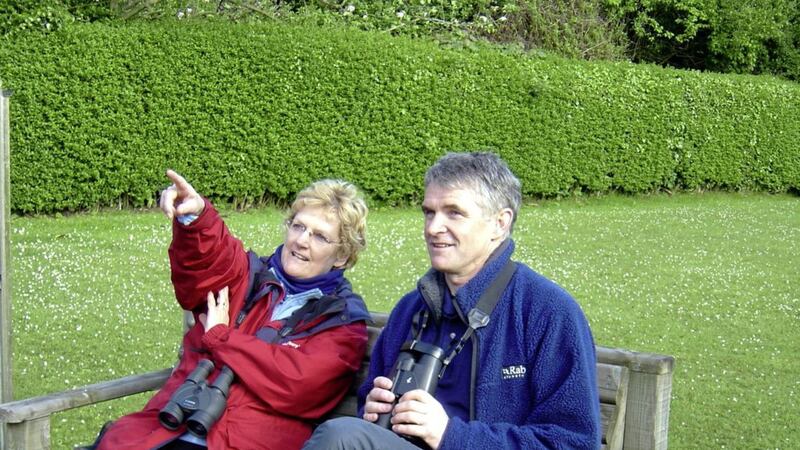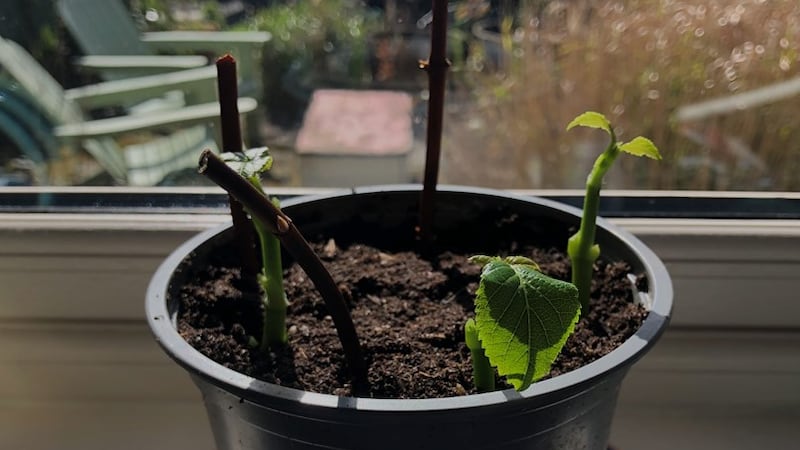THEY say the opening sentence of any book is make or break. For instance: "It was a bright cold day in April, and the clocks were striking thirteen." George Orwell in 1984 had it down to a tee. But so has Anthony McGeehan.
Try this: “Feathers are nature’s Swiss Army knife; multi-purpose equipment that facilitates flying, waterproofing the wearer, wooing a mate – and hugging the destiny of the species by brooding eggs.”
Migration is the movement of birds from one part of the world to another and back again and has been called one of the wonders of the world and in his latest book, To The Ends Of The Earth, McGeehan tells us of Ireland’s place in bird migration, that a bird is a sophisticated box of tricks and, as he unlocks that box, what flies out is remarkable.
Little Miracles
For instance, one day a swallow will lay her eggs in a cosy nest in Co Antrim, they hatch and within a couple of weeks those tiny chicks will be chasing insects under an African sky.
But why do they undertake that arduous journey? Mainly to find a food source. However, this means planning.
“When Popeye was in need of extra strength he opened a tin of spinach and instantly sprouted bulging biceps. One could argue that migratory birds undergo a similar transformation.”
They embark on a fattening programme. Like aeroplanes they fuel up, he says; like astronauts they are superhuman, able to undertake long-haul flight from the Arctic to Ireland, Ireland to Spain. Some like Wheatears migrate to their winter quarters in Africa even to the shores of the Indian Ocean.
Migration has puzzled experts for years. When did birds first make these long distance trips?
“The big news is that fossil evidence shows that some were capable of migratory flights at least 100 million years ago.”
And most species we recognise today, he adds, were around five million years ago. But it’s never been easy. Climate fluctuation has a huge effect on all things, not least birds.
Once, on a dark and stormy Donegal night, I went out to check the car and found a tiny black shivering bird just visible taking shelter against one of the tyres. We brought him in wrapped in a tea towel; he made no attempt to get away.
The little creature had webbed feet and when we looked up the bird book, discovered it was a storm petrel. Next day one of the local fishermen was so excited: "My first boat was called Storm Petrel but I’ve never seen one close up."
It was too late for him because, first thing in the morning our little visitor took off to resume living on the wing, only coming to land when the storm gets the better of him or when he makes his burrow on some island. Anthony mentions this bird, on average weighing one ounce, and evidence that at least one ringed and recorded had lived for 37 years.
There’s no end to the wonderment
In his book he talks of the importance of nostrils, fascinating facts of the Earth’s magnetic field, earthquakes that send a shock wave directly through the Earth’s core, star navigation, blue tits and the sheen on the blue crown of a male used in courtship as a guide to health.
“Males with the best lustre are preferred by females.” Isn’t that the truth!
I read in a magazine recently that scientists at Oxford and Cornell universities have developed a ‘birdcast’ that uses weather data to predict the movement of migrating birds, a system that could be used to reroute aircraft to avoid collisions with birds or to switch off wind turbines and gas flares during peak migration periods.
If they can get that up and running it will be good news for birds and applauded by all bird lovers.
:: To The Ends Of The Earth is published by the Collins Press, priced £29.99
Top dancer Jack a lover of Leitrim
ALTHOUGH he was born in Boston and trained in New York, Jack Furlong Junior’s heart is in Co Leitrim. Here as a young boy he spent long holidays on the family stud farm in Ballinglera, surrounded by cousins and horses. And on Friday November 2 he’s coming home again but this time cousins, aunts and uncles and his parents will be travelling to visit him when he appears on the stage of the Grand Opera House Belfast.
Jack is 28 and a dancer who has toured the world with the famous international Les Ballet Trockadero de Monte Carlo, an all-male comedy ballet company.
Why ballet? “It’s a passion.” Simple as that, but with passion comes hard work, touring 20 countries in one year, daily rehearsals and nightly performances, learning new routines, dancing female roles on pointe with superb costumes and way over-the-top make-up!
Does he have good-luck charms to ensure a good performance?
“I’m not superstitious but I always put my right shoe on first.” he told me. “I collect lapel pins but my friends say I actually collect people. Everywhere we go I know someone and they are always welcoming and I know it will be the same in Belfast.”
It’s a tough life, physically draining but Jack shares his down time between Leitrim and New York. Indeed, such is the pull to Ireland that he has been back here seven times since January.
I can’t recommend this show highly enough – the Dying Swan has to be seen to be believed. What a night out it is: superb, funny, real classical ballet danced by highly trained and talented male dancers.
And the bonus for us, Jack Furlong Junior.
:: Details at goh.co.uk









